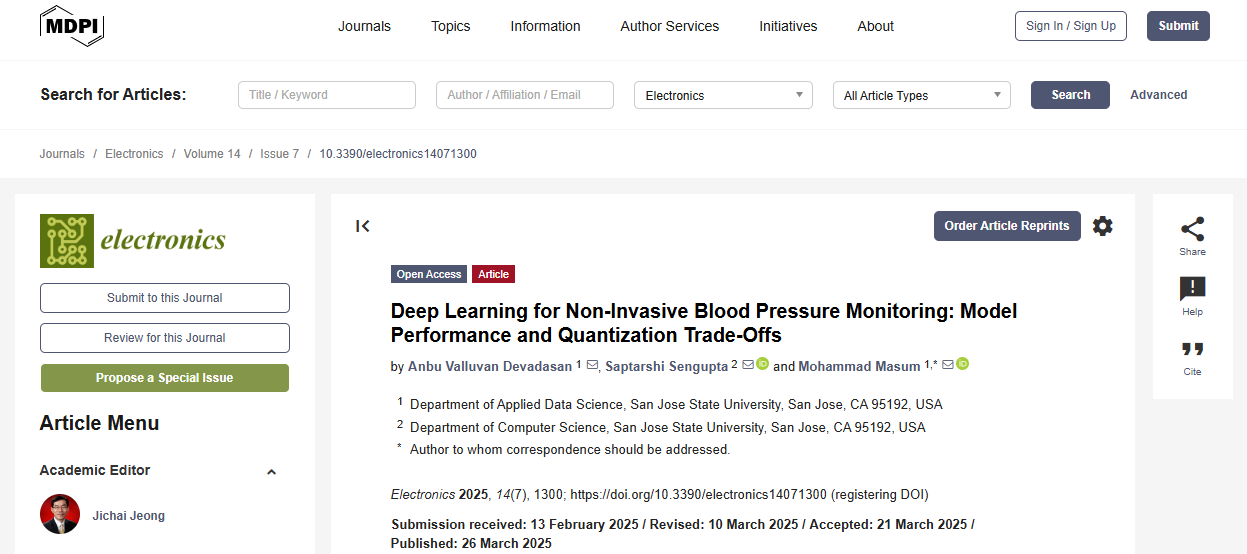In January I had the pleasure of working with Anbu Valluvan, an HP AI Studio tester, to resolve a GPU limitation issue his team was running into on their personal laptops when Google Colab GPU was not available due to budget constraints or GPU queuing.
The team had collected, created data strategies to ingest up and process blood pressure datasets in appropriate sizes to train small models for use with edge devices. However, their access to GPU was limited. To achieve the accuracy requirements for the paper to qualify for peer review and acceptance, Anbu reached out to collaborate on the project using AI Studio because I had access to a NVIDIA GeForce RTX 4070 GPU which allowed him to experiment and prepare the project with multiple iterations when access to NVIDIA A100 GPU was limited.
In a couple of minutes Anbu invited me to his AI Studio project, I synced assets and artifacts, and trained the model on my GPU. Because AI Studio saved artifacts, results, and cloned code to Github, Anbu could access them to continue his work.
Anbu’s work validated that edge AI optimizations could enable trained deep learning models to run on resource-constrained devices with real-time inference without sacrificing accuracy. Research methods and techniques, including data splitting strategies, quantization, and model compression reduced memory usage while preserving accuracy. Data management involved MIMIC-IV waveform datasets, preprocessing to remove noise, and temporal alignment to ensure signal integrity.
Congratulations on the publication Anbu! It was a fun project and neat way to collaborate using AI Studio!
Published on March 26, 2025, this paper is the result of the team’s research:
5 Take-aways from Deep Learning for Non-Invasive Blood Pressure Monitoring: Model Performance and Quantization Trade-Offs
-
Attentive BPNet Achieves Best Accuracy
-
Used three deep learning models for continuous blood pressure monitoring: a residual-enhanced convolutional network, a transformer-based model, and Attentive BPNet.
-
Attentive BPNet had the lowest mean absolute error (MAE): 6.36 mmHg for systolic BP (SBP), 4.09 mmHg for diastolic BP (DBP), and 4.56 mmHg for mean arterial pressure (MBP).
-
-
Edge AI Enables Real-Time Blood Pressure Monitoring
-
Post-training quantization reduced model size by 90.71% (from 1.40 MB to 0.13 MB) while maintaining accuracy, allowing deployment on edge devices.
-
The residual-enhanced convolutional network maintained a 2.6 ms inference time, making real-time monitoring feasible.
-
-
Signal Processing Improves Accuracy
-
Preprocessing techniques such as adaptive filtering, peak-to-peak alignment, and statistical normalization enhanced model performance and stability.
-
-
Quantization Reduces Computational Cost with Minimal Accuracy Loss
-
Full-integer quantization provided up to 91.13% compression while keeping prediction errors within acceptable medical limits.
-
However, transformer-based models struggled post-quantization, with inference latency exceeding 3000 ms.
-
-
Clinical Feasibility Meets Medical Standards
-
The residual-enhanced convolutional network met Association for the Advancement of Medical Instrumentation (AAMI) accuracy standards (±5 mmHg bias, <8 mmHg standard deviation), make this technique and model it a strong candidate for clinical deployment.
-




